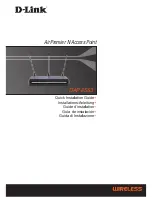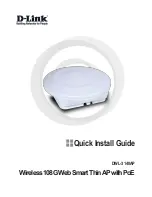
Multi-Function Gigabit Wireless-N Client Bridge
Version 2.0
23
ESSID Selection
: As this device supports multiple SSIDs, it is possible to configure
a different security mode for each SSID (profile). Select an SSID from the drop-down
list.
Broadcast SSID
: Select
Enable
or
Disable
from the drop-down list. This is the SSID
broadcast feature.
When this option is set to Enable, your wireless network name is
broadcast to anyone within the range of your signal
. If you're not using encryption then
they could connect to your network. When this is disabled, you must enter the
Wireless Network Name (SSID) on the client manually to connect to the network.
WMM
: Choose to
Enable
or
Disable
WMM. This is the Quality of Service (QoS)
feature for prioritizing voice and video applications. This option can be further
configured in
WMM
under the
Wireless
drop-down menu.
Encryption
: Select
WEP
from the drop-down list.
Authentication Type:
Select
Open System
,
Shared Key, or auto
. Authentication
method from the drop-down list. An open system allows any client to authenticate as
long as it conforms to any MAC address filter policies that may have been set. All
authentication packets are transmitted without encryption. Shared Key sends an
unencrypted challenge text string to any device attempting to communicate with the
AP. The device requesting authentication encrypts the challenge text and sends it
back to the access point. If the challenge text is encrypted correctly, the access point
allows the requesting device to authenticate. It is recommended to select Auto if you
are not sure which authentication type is used.
Key Length
: Select a
64-bit
or
128-bit
WEP key length from the drop-down list.
Key Type
: Select a key type from the drop-down list. 128-bit encryption requires a
longer key than 64-bit encryption. Keys are defined by entering in a string in
HEX
(hexadecimal - using characters 0-9, A-F) or
ASCII
(American Standard Code for
4Gon www.4Gon.co.uk [email protected] Tel: +44 (0)1245 808295 Fax: +44 (0)1245 808299
















































